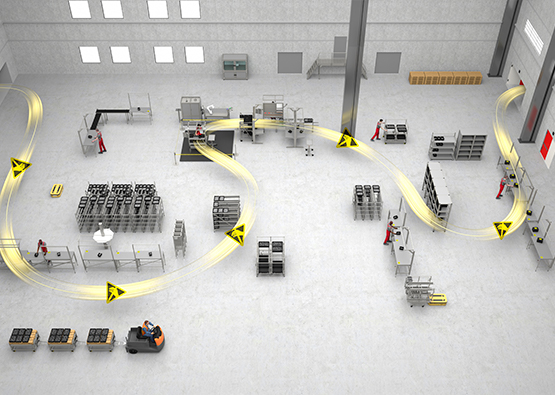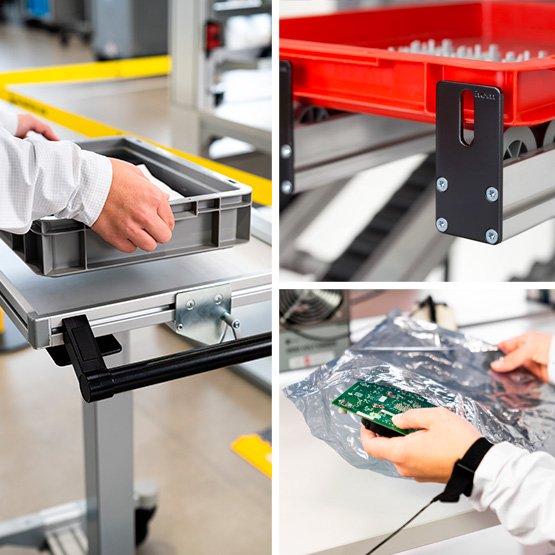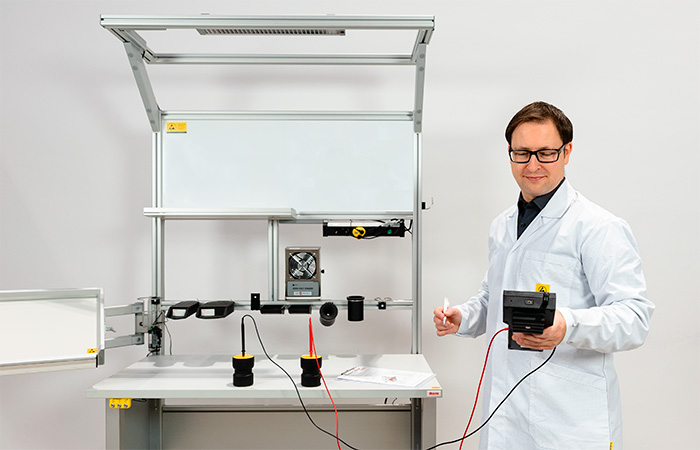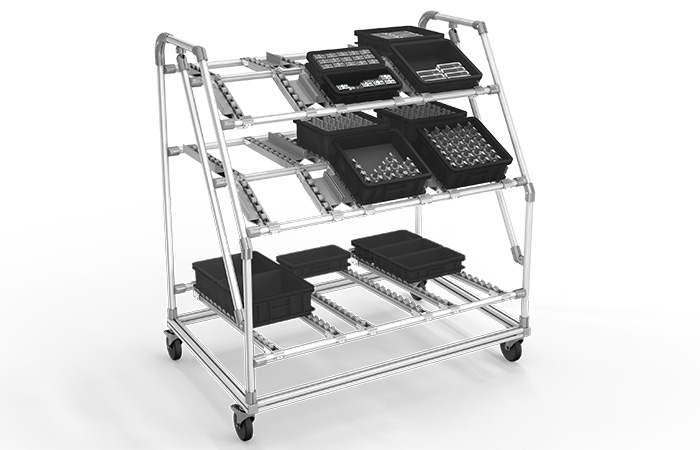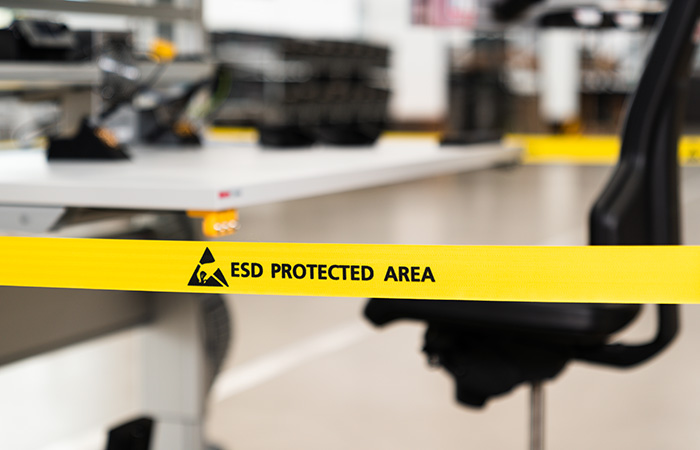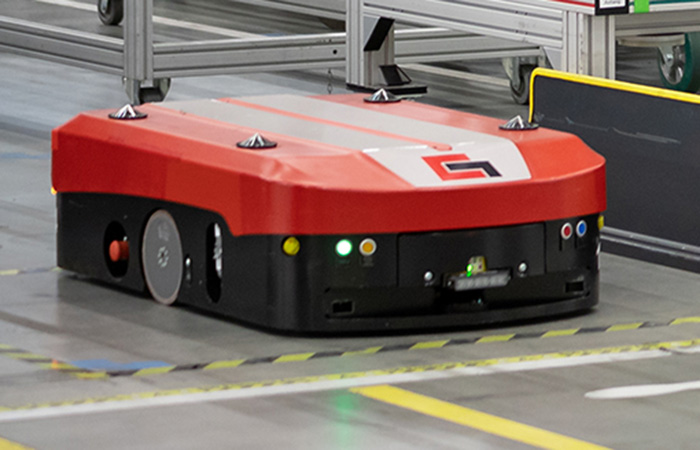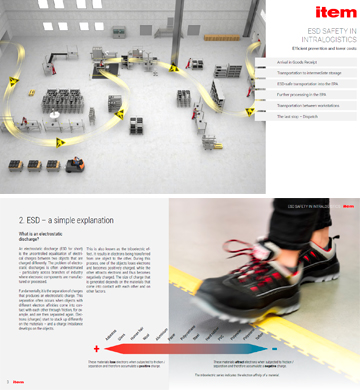The ABS control unit begins its journey. It is not yet fully manufactured – the microchip still has to be installed on the circuit board.
Discover the most important ESD safety measures for the entire intralogistics process in this guide! Join an ABS control unit as it travels through the process chain and find out what really matters at each stage when it comes to effective ESD safety.

